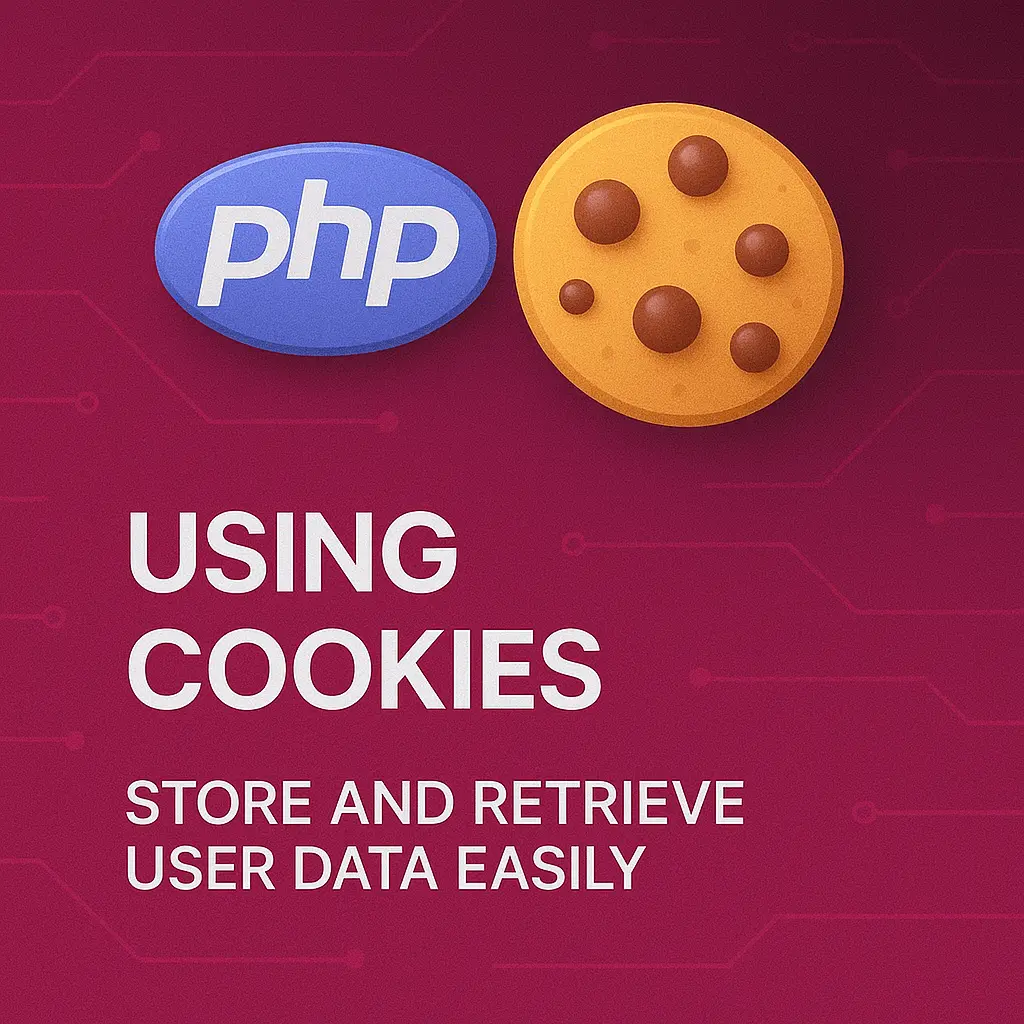In this comprehensive guide, we’ll delve into the intricacies of PHP cookie management, covering everything from the basics of cookies to advanced techniques for optimizing cookie handling and security. Through detailed explanations and practical code examples, you’ll gain a thorough understanding of PHP cookies and learn how to leverage their power to build dynamic and user-friendly web applications.
Cookie Basics
What are Cookies?
Cookies are small pieces of data stored in the user’s browser by websites they visit. They are commonly used to track user sessions, remember user preferences, and personalize the user experience.
Setting Cookies
In PHP, cookies are set using the setcookie() function. This function takes several parameters, including the cookie name, value, expiration time, path, domain, and secure flag.
<?php
// Set a cookie
setcookie('username', 'john_doe', time() + (86400 * 30), '/');
?>
In this example, we set a cookie named ‘username’ with the value ‘john_doe’ that expires in 30 days and is accessible from the root path.
Accessing Cookies
Once set, cookies can be accessed using the $_COOKIE superglobal array.
<?php
// Access a cookie
echo $_COOKIE['username'];
?>
Advanced Cookie Handling
Cookie Expiration
You can set custom expiration times for cookies to control how long they persist on the user’s browser.
<?php
// Set a cookie with custom expiration time
setcookie('username', 'john_doe', time() + 3600, '/');
?>
Deleting Cookies
To delete a cookie, you can set its expiration time to a past value.
<?php
// Delete a cookie
setcookie('username', '', time() - 3600, '/');
?>
Cookie Security
To enhance cookie security, you can set the secure flag to ensure that cookies are only sent over HTTPS connections.
<?php
// Set a secure cookie
setcookie('username', 'john_doe', time() + (86400 * 30), '/', '', true);
?>
Cookie Accessibility
You can specify the path and domain parameters to control the accessibility of cookies.
<?php
// Set a cookie with custom path and domain
setcookie('username', 'john_doe', time() + (86400 * 30), '/admin', 'example.com');
?>
Best Practices
Limit Cookie Size: Avoid storing large amounts of data in cookies to prevent performance issues and potential security vulnerabilities.
Secure Sensitive Cookies: Use the secure flag and HTTPS to ensure that sensitive cookies are transmitted securely over encrypted connections.
Regularly Update Expiration Times: Periodically update cookie expiration times to manage session lifetimes and improve security.
Encrypt Cookie Values: Encrypt sensitive cookie values to prevent unauthorized access and data tampering.
Conclusion
PHP cookie management is a crucial aspect of web development, enabling websites to store and retrieve user-specific information on the client-side. In this guide, we explored the basics of PHP cookies, including setting and accessing cookies, as well as advanced techniques for optimizing cookie handling and security. By following best practices and leveraging advanced cookie management techniques, you can build dynamic and user-friendly web applications that provide a personalized and secure user experience.
<?php
// Example PHP code demonstrating cookie management
// Set a cookie
setcookie('username', 'john_doe', time() + (86400 * 30), '/');
// Access a cookie
echo $_COOKIE['username'];
// Delete a cookie
setcookie('username', '', time() - 3600, '/');
?>
This PHP script demonstrates basic cookie management operations, including setting, accessing, and deleting cookies. By incorporating these techniques into your PHP applications and following best practices for cookie management, you can ensure the security and reliability of your web applications’ cookie handling functionality.






